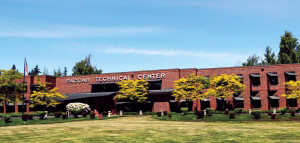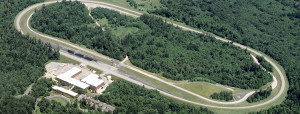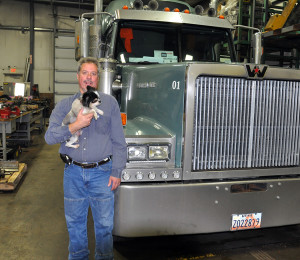 Last month, John Walko, Pittsburgh Power’s technical director, and myself were invited to tour the Paccar test center in Mount Vernon, WA. The invitation was for us to introduce and explain our “Dorothy” invention (EGR soot separator) to their engineering group. At first, they seemed skeptical, but after about an hour, it turned into a brainstorming session, and we were given an assignment. The engineers asked us to generate more data, such as the flow through the Dorothy and temperature drop, which was very important to them, because it lowers the combustion
Last month, John Walko, Pittsburgh Power’s technical director, and myself were invited to tour the Paccar test center in Mount Vernon, WA. The invitation was for us to introduce and explain our “Dorothy” invention (EGR soot separator) to their engineering group. At first, they seemed skeptical, but after about an hour, it turned into a brainstorming session, and we were given an assignment. The engineers asked us to generate more data, such as the flow through the Dorothy and temperature drop, which was very important to them, because it lowers the combustion
temperature, thus lowering the emissions. Currently, the “Dorothy” is dropping the temperature of the EGR flow by 70 degrees.
During our tour we witnessed a T-880 tandem dump truck, on a controlled environment chassis dyno, with the temperature set at 22 degrees below zero! The wind tunnel in front of the truck can generate 75 mph winds, and the altitude can be changed. Think about that, how do you change the altitude in a dyno room that is at sea level? Other tests we witnessed were the turning on and off of the headlights and turn signals to see how long the bulbs will last; the rear section of a truck frame being twisted until failure; a shaker rig being set up to shake an entire truck until failure; actuators working dash switches until failure; and Paccar engines, transmissions and differentials, with disc brakes, running on dynos, and simulating actual driving experiences. They were also testing their own front axles, twisting them and placing different torques on them.
John and I also had the opportunity to go for a ride on their test track, which is a 1.5-mile banked oval, an off-road course with many types of pot holes, low bridge expansion joints, speed bumps, and two hills to do dead-stop starts at 20 and 30 degrees. The Paccar engine and automatic transmission (12 speed) will start out on the 30-degree hill, once the brake is released, without even touching the throttle, while pulling a gross weight of 80,000 pounds. Wow – these automatics have come a long way (that transmission is a joint effort between Eaton and Paccar). John and I would like to thank the employees of the Paccar Technical Center for sharing their time and beautiful facility with us.
 Mike Lane, an owner operator with Tramcor out of Ogden, Utah, was recently in my office and sharing his driving thoughts and techniques, which will be the focus for the remainder of this article. Mike owns a Western Star Low Max, powered by a Pittsburgh Power DD5 Detroit, with 840,000 miles on the engine, which produces 720 hp to the ground through an 18-speed Eaton transmission. Mike is a true gear-head, and a former mud bog racer, with a 1954 Willis pickup powered by a 400 Small Block Chevy fitted with an Edelbrock intake manifold, a Holley 750 double pumper carburetor, Brodix heads and a wild Crower camshaft.
Mike Lane, an owner operator with Tramcor out of Ogden, Utah, was recently in my office and sharing his driving thoughts and techniques, which will be the focus for the remainder of this article. Mike owns a Western Star Low Max, powered by a Pittsburgh Power DD5 Detroit, with 840,000 miles on the engine, which produces 720 hp to the ground through an 18-speed Eaton transmission. Mike is a true gear-head, and a former mud bog racer, with a 1954 Willis pickup powered by a 400 Small Block Chevy fitted with an Edelbrock intake manifold, a Holley 750 double pumper carburetor, Brodix heads and a wild Crower camshaft.
Mike Lane says: “Listen to your truck, it will talk to you.” Sounds, vibrations, how altitude and ambient temperatures affect boost, exhaust gas temperature, available power that can be used, and, of course, fuel mileage, are all things you should be paying attention to while driving.
Different sounds and pitches in the turbo will give you an idea of where the turbo boost should be. Naturally, you must have a turbo boost gauge and a pyrometer (exhaust gas temperature gauge). When you are driving the truck, cruise control turned off, based on the pitch of the turbo and the position of your foot on the throttle, along with the tachometer reading (RPM), you should know about how much turbo boost the engine is using and what the pyrometer reading is before you even look at it. Play mind games with yourself: knowing where your foot is on the throttle and the sound of the engine, try to guess how much turbo boost is being used and the exhaust gas temperature. Then, go the other way: look at the boost being used and where your foot is on the throttle, and then try to figure out the RPM and exhaust gas temperature. By playing these games, you will also learn how altitude affects your turbo boost, exhaust gas temperatures and horsepower. Keep in mind, at 10,000 feet there is only half the molecules of oxygen available for the engine to burn.
Vibrations change as parts wear out, but it’s a slow process, and our bodies tend to adapt without us even realizing it. If you allow a friend or mechanic to take your rig for a ride, they will feel the vibrations you don’t. The torsional damper, which should be replaced every 500,000 miles, is an item you don’t realize is failing, since it takes several years to wear out. Those vibrations will travel through the pedals, shifter, steering wheel and door locks – if they shake, the damper is worn out.
 Driveshafts should be replaced or rebuilt every 500,000 miles, but most owner operators do not do it. Carrier bearings, U-joints, slip yokes, and shafts can twist, bend and go out of balance. Sometimes it’s a slow process, while other times it happens quickly. A shock load or a bind can destroy the shaft instantly, or start the bending process. When taking the driveshaft to a shop, always have the tubes straightened and balanced, along with new U-joints, bearings and, possibly, the slip joint.
Driveshafts should be replaced or rebuilt every 500,000 miles, but most owner operators do not do it. Carrier bearings, U-joints, slip yokes, and shafts can twist, bend and go out of balance. Sometimes it’s a slow process, while other times it happens quickly. A shock load or a bind can destroy the shaft instantly, or start the bending process. When taking the driveshaft to a shop, always have the tubes straightened and balanced, along with new U-joints, bearings and, possibly, the slip joint.
As tires wear, they go out of balance. One way to overcome this is with a self-adjusting on-board balancing system like Balance Masters or Centramatic, which counteract or equal-out the tire as it wears and goes out of balance. If the tire has strange wear patterns and wears out of round, it may not be possible to balance it. Different road conditions can change the vibrations, so when driving on new asphalt, pay close attention to the sound and feel of the tires. Steel wheels, since they are welded and not turned on a lathe, cannot be perfectly round. If your truck is equipped with steel wheels, chances are you will have a vibration.
Another item that can cause vibrations are engine mounts. Made of rubber, these mounts will wear, but it takes thousands of miles (another item that wears gradually, making it hard to notice). But, once you get down to metal on metal, you will feel it and hear it. All rubber mounts, such as the radiator and charge air cooler mounts, cab mounts, hood mounts and exhaust piping mounts, can cause vibrations. If worn out, you need to change these items. Replacing the rubber around the door and the felt in the window tracks will also eliminate squeaks and air leaks.
Well, we have run out of space, so Mike Lane and I must say goodbye, until next month. Remember, listen to your truck – it will talk to you! For questions or comments, I can be reached at Pittsburgh Power in Saxonburg, PA by calling (724) 360-4080. Happy New Year!
